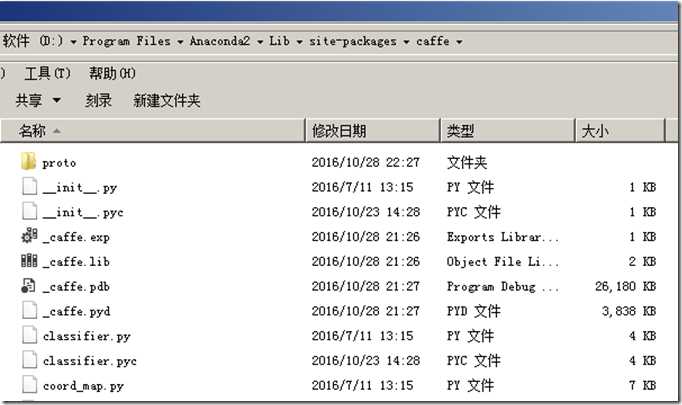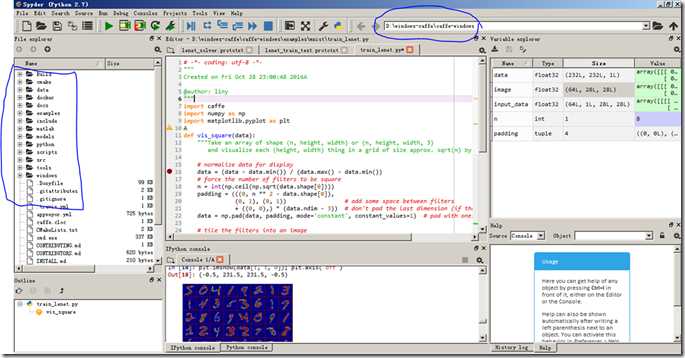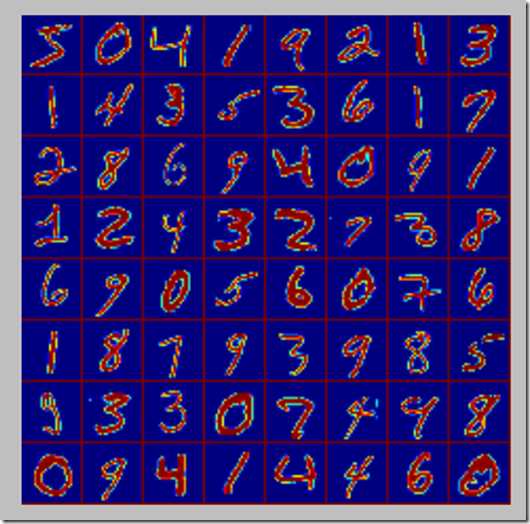使用caffe提供的python接口训练mnist例子
Posted
tags:
篇首语:本文由小常识网(cha138.com)小编为大家整理,主要介绍了使用caffe提供的python接口训练mnist例子相关的知识,希望对你有一定的参考价值。
1 首先肯定是安装caffe,并且编译python接口,如果是在windows上,最好把编译出来的python文件夹的caffe文件夹拷贝到anaconda文件夹下面去,这样就有代码自动提示功能,如下:
本文中使用的ide为anaconda安装中自带的spyder,如图所示,将根目录设置为caffe的根目录。
import caffe caffe.set_mode_cpu() solver = caffe.SGDSolver(‘examples/mnist/lenet_solver.prototxt‘) solver.solve()
以上为一次全部迭代,如果想自己控制,可使用如下代码:
import caffe caffe.set_mode_cpu() solver = caffe.SGDSolver(‘examples/mnist/lenet_solver.prototxt‘) #solver.solve() iter = solver.iter while iter<10000: solver.step(1) iter = solver.iter input_data = solver.net.blobs[‘data‘].data loss = solver.net.blobs[‘loss‘].data accuracy = solver.test_nets[0].blobs[‘accuracy‘].data print ‘iter:‘, iter, ‘loss:‘, loss,‘accuracy:‘,accuracy
import caffe import matplotlib.pyplot as plt import numpy as np def vis_square(data): """Take an array of shape (n, height, width) or (n, height, width, 3) and visualize each (height, width) thing in a grid of size approx. sqrt(n) by sqrt(n)""" # normalize data for display data = (data - data.min()) / (data.max() - data.min()) # force the number of filters to be square n = int(np.ceil(np.sqrt(data.shape[0]))) padding = (((0, n ** 2 - data.shape[0]), (0, 1), (0, 1)) # add some space between filters + ((0, 0),) * (data.ndim - 3)) # don‘t pad the last dimension (if there is one) data = np.pad(data, padding, mode=‘constant‘, constant_values=1) # pad with ones (white) # tile the filters into an image data = data.reshape((n, n) + data.shape[1:]).transpose((0, 2, 1, 3) + tuple(range(4, data.ndim + 1))) data = data.reshape((n * data.shape[1], n * data.shape[3]) + data.shape[4:]) if data.shape[2] == 1: data = data[:,:,0] plt.imshow(data); plt.axis(‘off‘) if __name__ == ‘__main__‘: caffe.set_mode_cpu() solver = caffe.SGDSolver(‘examples/mnist/lenet_solver.prototxt‘) solver.step(1) input_data = solver.net.blobs[‘data‘].data plt.figure(0) vis_square(input_data.transpose(0, 2, 3, 1)) filters = solver.net.params[‘conv1‘][0].data plt.figure(1) vis_square(filters.transpose(0, 2, 3, 1))
以上是关于使用caffe提供的python接口训练mnist例子的主要内容,如果未能解决你的问题,请参考以下文章



